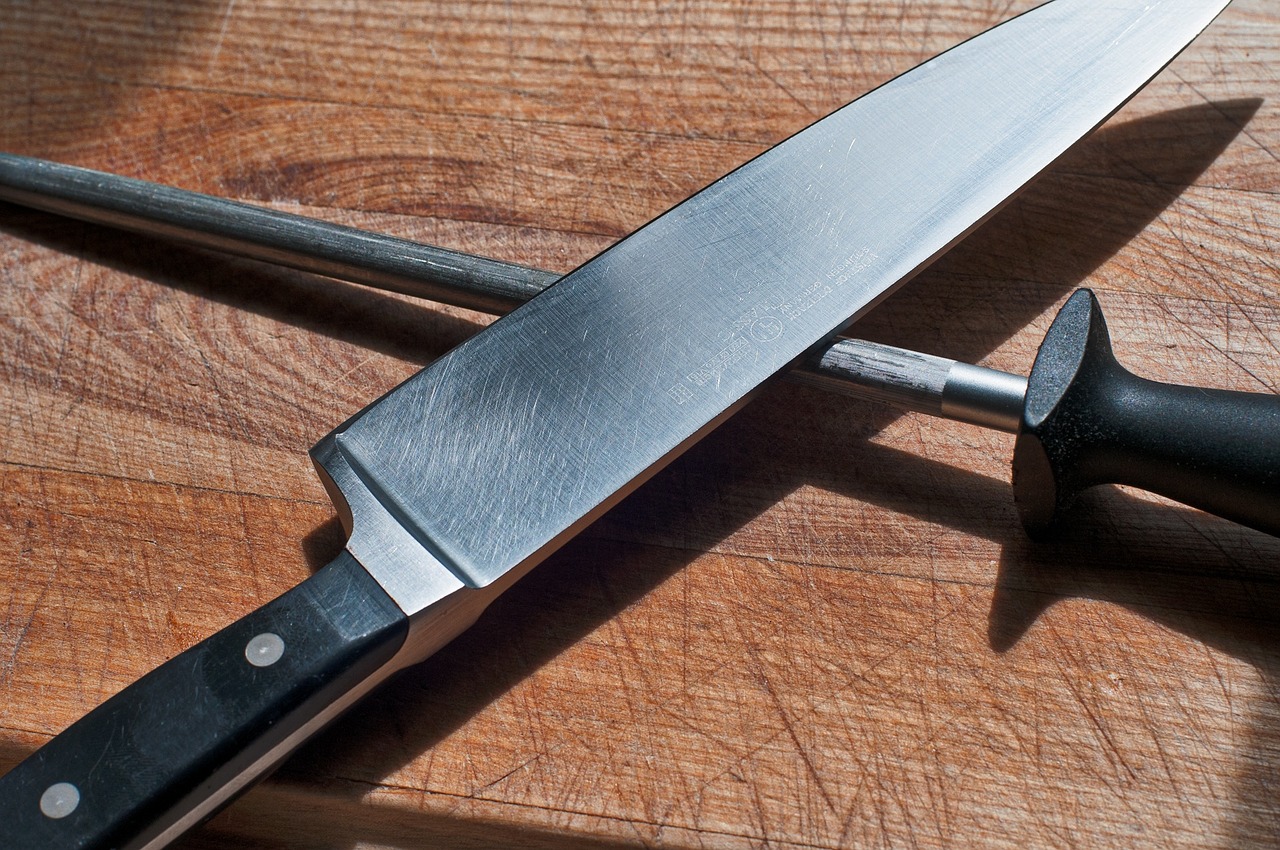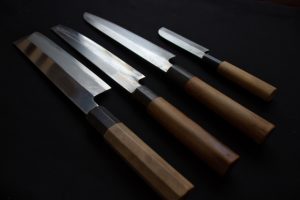What is Honing Steel

Before we discuss what a honing steel is, please know that we’re discussing about it as this kind of steel is often added to a set of professional knives to ease in realignment of knife rims and edges.
Honing steel, sometimes referred to as sharpening steel, butcher’s steel, and chef’s steel, is a device used to realign the rim of a knife’s blade. While both achieve the same goal, honing steel is frequently mistaken for being a sharpening blade, which implies an instrument that removes debris from a knife’s blade in order to make it sharper. This tool is just a metal rod that you stroke your kitchen knives with to bring back its sharpness. Simply put, honing realigns the knife’s blade while a sharpener grinds off metal to create a new edge. Knives are honed until its edges get so worn down that you need to sharpen it again.
You’ve probably seen it before, as a honing steel is often included in a professional knife set. Honing steel looks like a metal stick with a knob or handle and is usually included with knife sets. If you’ve been at butcher houses or spent time in commercial kitchens, you’ll have definitely seen one being used. In this article, we’ll take a deeper look at what honing steel is exactly and what it’s used for.
Types of honing steel:
Honing steel comes in various materials and types. There are three types of honing steel, with each type differentiated by its material.
Steel hones:
Steel hones are the oldest and most common type of honing steel. These are the ones that are usually included with knife sets. They can be completely flat and smooth or feature fine ridges. Steel hones with fine ridges tend to give edges more tooth, making it cut more aggressively, however ridged hones aren’t long lasting and tend to wear the edge down faster. Smooth steel hones are most preferred as they’re non-destructive.
Diamond hones:
Diamond hones are perfect for any type of knife steel, including German, Japanese, Western – you name it. Keep in mind, diamond hones are not to be used for regular maintenance as it’s not a true honing steel. While it may look like a honing steel, it functions more like a sharpener. Depending on how hard you press, diamond hones won’t replace sharpening stones, but if you don’t have time for a full sharpening session, then diamond hones are great for quick tune-ups with just a few swipes.
Ceramic hones:
Ceramic hones are extremely versatile and a great choice for those looking for something in between steel and diamond hones. They’re harder than any type of steel, but not as aggressive as diamond therefore they won’t wear a knife down. Ceramic hones are great at not only realigning an edge but cleaning it up a bit as well. A knife’s microscopic teeth will be taken away with a ceramic hone, which helps the edge stay sharper for longer. Only a very miniscule amount of metal is lost.
Why are honing steels needed?
Just like re-sharpening your pencils, professional knives need ultra care and re-sharpening to work in its full capabilities.
You should use honing steels whenever your knives begin to feel dull and depending on how frequently you use your kitchen knives, it’s recommended to have them sharpened once a year by an expert. If you purchase a kitchen knife set, often the company will offer free sharpening, but you’ll have to ship your set to them or take them to their workshop. It’s extremely important to keep your knives properly sharpened to ensure your cutting experience is enjoyable. This is why honing steels are so important. Honing steels are used by sliding your blade away from you, along the steel while holding the blade slanted. The honing steel remains motionless during this process. The blade must be held at an angle, approximately 20°, and the motion should be repeated six to ten times.
What does a honing steel look like?
You’ve mostly likely seen honing steels before, either in kitchens or in movies. If you have a knife set, you should have one as well. It’s the long circular or flat rod with a handle or a knob. These rods can be up to 31cm long, and come in three different shapes: oval, flat, or round. Honing steel will be made of one of three materials: diamond, ceramic, or steel.
Honing vs. Sharpening
While both achieve the same goal, there is a difference between honing and sharpening. The result of both action results in a sharper blade; however, the processes are different. Many people think when they run their knives back and forth over honing steel, that they’re in fact sharpening their blade. This is wrong. Honing steel features ribbing, and this ribbing is very violent and eliminates a lot of metal from your knives when used. If you hone your knife too much, you’ll dull it faster and potentially cause irreparable harm to your knife in the long run.


